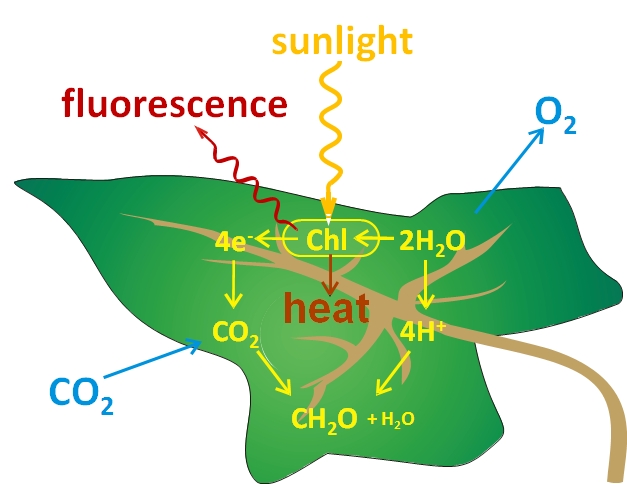
Image source: http://www.phenovation.com/systems/
Key Concepts for Measurement
Fluorescence quenching
(Maxwell and Johnson, 2000)
Fluorescence quenching is a process that decreases a fluorescence signal. Chlorophyll fluorescence is highest in the first second after a leaf is taken from a dark environment and exposed to light because PS II reaction centers close progressively, i.e., they fill their electron acceptor, QA, and energy is diverted to fluorescence. Then, over the next few minutes, fluorescence quenching occurs via two processes:
- Photochemical quenching occurs because there is an increase in electron transport away from PSII (opening reaction centers) due to light induced activation of enzymes involved in carbon metabolism and the opening of stomata.
- Non-photochemical quenching results in an increase in the efficiency of heat production.